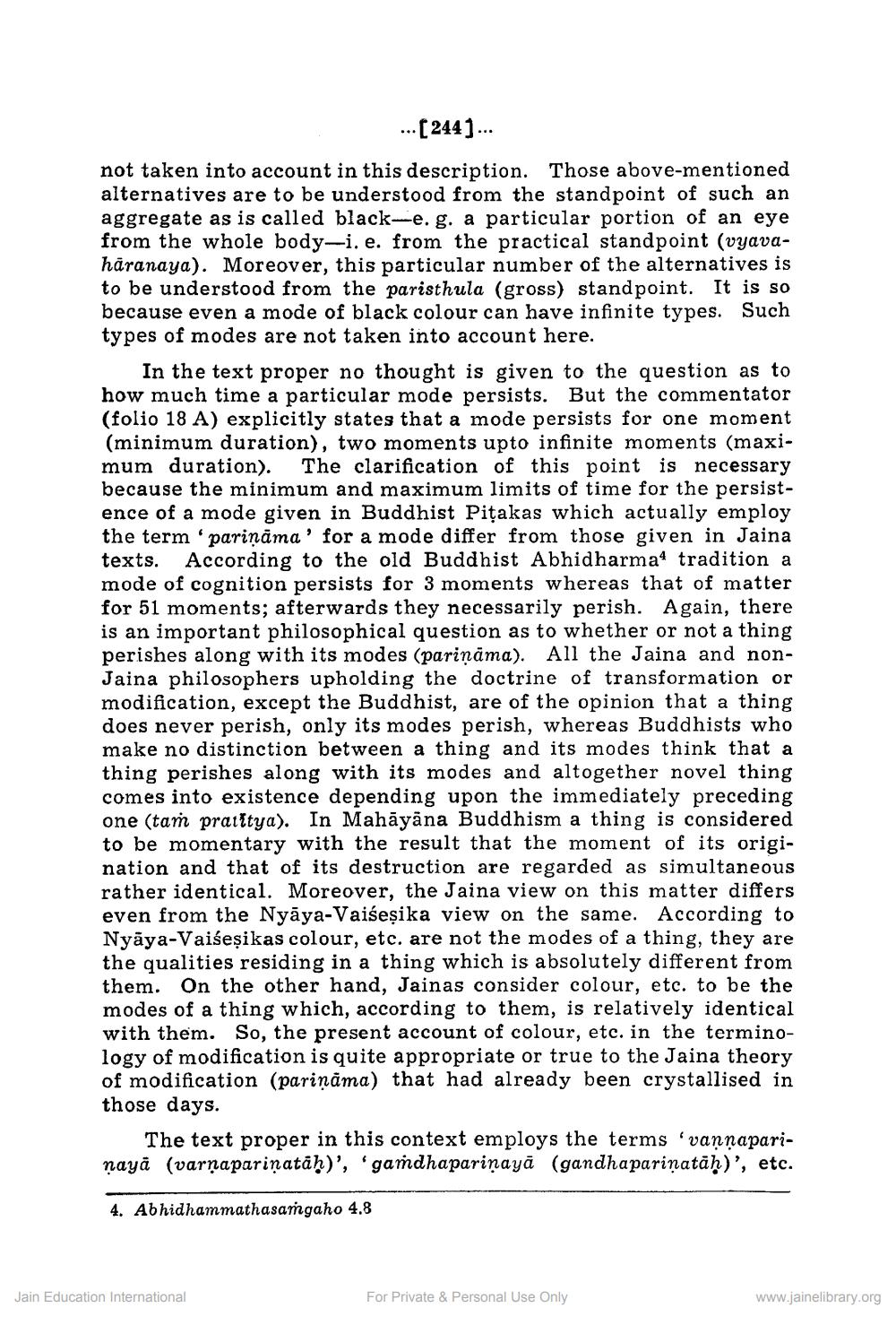________________
...[244]...
not taken into account in this description. Those above-mentioned alternatives are to be understood from the standpoint of such an aggregate as is called black-e. g. a particular portion of an eye from the whole body-i. e. from the practical standpoint (vyavahāranaya). Moreover, this particular number of the alternatives is to be understood from the paristhula (gross) standpoint. It is so because even a mode of black colour can have infinite types. Such types of modes are not taken into account here.
In the text proper no thought is given to the question as to how much time a particular mode persists. But the commentator (folio 18 A) explicitly states that a mode persists for one moment (minimum duration), two moments upto infinite moments (maximum duration). The clarification of this point is necessary because the minimum and maximum limits of time for the persistence of a mode given in Buddhist Piṭakas which actually employ the term 'pariņāma' for a mode differ from those given in Jaina texts. According to the old Buddhist Abhidharma tradition a mode of cognition persists for 3 moments whereas that of matter for 51 moments; afterwards they necessarily perish. Again, there is an important philosophical question as to whether or not a thing perishes along with its modes (pariņāma). All the Jaina and nonJaina philosophers upholding the doctrine of transformation or modification, except the Buddhist, are of the opinion that a thing does never perish, only its modes perish, whereas Buddhists who make no distinction between a thing and its modes think that a thing perishes along with its modes and altogether novel thing comes into existence depending upon the immediately preceding one (tam pratitya). In Mahāyāna Buddhism a thing is considered to be momentary with the result that the moment of its origination and that of its destruction are regarded as simultaneous rather identical. Moreover, the Jaina view on this matter differs even from the Nyaya-Vaiśeşika view on the same. According to Nyaya-Vaiseṣikas colour, etc. are not the modes of a thing, they are the qualities residing in a thing which is absolutely different from them. On the other hand, Jainas consider colour, etc. to be the modes of a thing which, according to them, is relatively identical with them. So, the present account of colour, etc. in the terminology of modification is quite appropriate or true to the Jaina theory of modification (pariņāma) that had already been crystallised in those days.
The text proper in this context employs the terms 'vannaparinaya (varṇaparinataḥ)', 'gamdhaparinaya (gandhapariṇatāḥ)', etc.
4. Abhidhammathasamgaho 4.8
Jain Education International
For Private & Personal Use Only
www.jainelibrary.org




